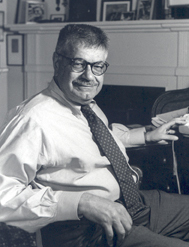The Big Ride
Wednesday, August 27th, 2008August 27, 2008
Washington, DC
25 states. 15 days. 8 novels. 2 countries. 1 Ford Escape Hybrid. 1 seriously saddle-sore G-man.
The Big Read initiative will hit the highway Sept. 12-27 for the Big Ride, a fortnight of events around the country designed to stitch together more than a dozen of the two hundred cities and towns hosting NEA-sponsored one-city-one-book programs during the 2008-2009 school year. As project director, I’ll have a ringside seat behind the wheel as all these communities come together for monthlong celebrations of great literature.
 |
|
The tentative waypoints of the Big Ride loop, with this caveat: I brake for historical markers. |
Among other pit stops on the trip, I’ll meet up with residents of Winston-Salem reading The Grapes of Wrath, help unveil an NEA-midwifed anthology of Mexican literature in El Paso, celebrate The Great Gatsby on a phantom pub-crawl of San Francisco’s Prohibition-era speakeasies, watch Coloradoans learn how to mush a dogsled team in tribute to The Call of the Wild, and just generally make a spectacle of myself in service of The Big Read.
Envisioned as the first of several such road trips, September’s Ride marks a sort of national debut for The Big Read. Developed three years ago in response to the 2004’s alarming Reading at Risk report ( http://www.arts.gov/research/Research_Brochures.php ) — which found that fewer than half of Americans today read for pleasure — The Big Read has given people in hundreds of cities and towns something in common to talk about more interesting than the weather. Never before, though, have consecutive events across the country communicated the ambitious scope of the project.
Since 2005, organizations ranging from libraries to zoos have received grants to create calendars of events around books they choose from a growing NEA list. The roster of more than 20 books includes stories as beloved as The Adventures of Tom Sawyer and as new as Tobias Wolff’s Old School — a book I had the honor of reviewing in the San Francisco Chronicle just five years ago as the Chron’s book critic.
Thanks to the generosity of the Ford Motor Company, my colleagues and I at The Big Read now have an eye-catching, borscht-red, fuel-efficient pair of wheels to tool around the country in. Nicknamed Rosie — for the paint job, but also for Don Quixote’s old mount Rocinante — this hybrid gives the initiative a kitschy sense of adventure too rarely associated with reading nowadays. Here at the NEA, we avail ourselves of Rosie for transportation to keynote speeches, event introductions, even appearances in the occasional holiday parade. But Rosie’s trips have always been short hops — until now.
The whole idea of The Big Read has always been to remove from great books any taint of the medicinal, and restore the freshness that gave them their staying power in the first place. Cities and towns that participate report substantial upticks in library circulation, book sales, and general civic involvement. In other words, all indicators tell us that The Big Read is onto something. If a cross-country road trip in a hybrid can help rope lapsed readers into picking up a book, nobody should be above this kind of showmanship.
So watch this space for dispatches leading up to, and especially during, The Big Ride. Please bombard me at bigreadblog@arts.gov with any questions or suggestions about road food, deep-pocketed and/or philanthropy-minded gas or motel chains, audiobooks for company, mobile voice-recognition systems for dictation, literary sidetracks along the way, techniques for averting deep-vein thrombosis, and anything else that seems even tenuously relevant.
And please take a look at the tentative route map above. From the starting line here on Pennsylvania Ave. Sept. 12, to the breakers beyond Pacific Coast Highway Sept. 20, to the checkered flag back here on Sept. 27 at the National Book Festival, the Big Ride will help create readers from coast to coast and back again. If you find yourself anywhere along Rosie’s itinerary, or if you just see a red hybrid festooned with Big Read signage speeding by, by all means wave me down…
